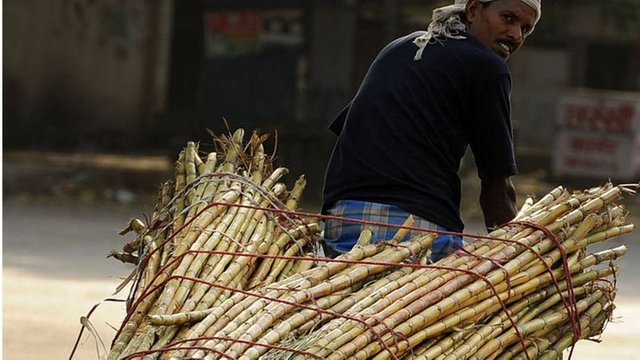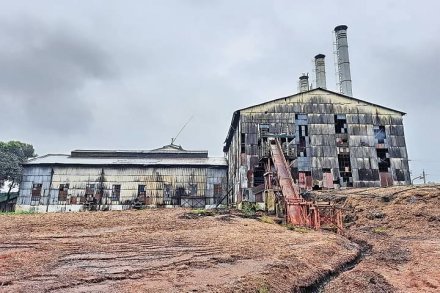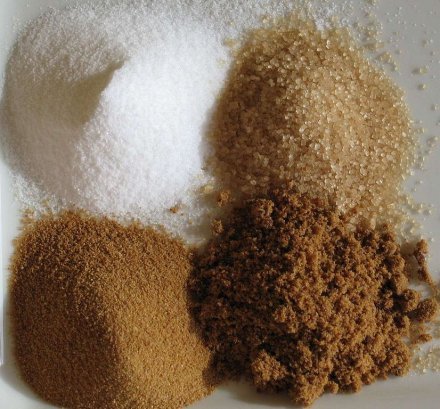The cries of the government sugar mill workers are circulating on social media in Bangladesh, the workers are not getting paid for the losses of the sugar mill. Not only sugar mill workers, but also sugarcane farmers. They have supplied sugarcane to the sugar mills on contract basis, but are not getting money from the sale of sugarcane as they are not selling the same.
However, the demand for sugar in Bangladesh is about eighteen lakh metric tons per year.The demand for sugar is increasing every year as the standard of living of the country's population increases, but the sugar in our sugar mills remains unsold. Sugarcane growers and sugar mill workers, the two main groups involved in sugar production, are not getting their dues.
The sugar and food industry corporation (BSFIC) is responsible for 15 government sugar mills in Bangladesh. All but one of these sugar mills are counting losses. According to BSFIC's records, the loss in the 2019-20 fiscal year alone stood at Tk 960 crore. If we calculate the losses of the last five years, which will stand at Rs 3,97 crore.In order to reduce this burden in the face of continuous losses, the authorities decided to stop production at six government sugar mills in December 2020. The response to the announcement has been overwhelming, with farmers deciding to burn sugarcane in the field, and it is expected that the rest of the mills will follow the same path, starting with these six mills. But why is sugar not being sold despite the demand in the market and why is the sugar mill counting losses year after year?
At a glance, the sugar mill of Bangladesh
The process of planting sugarcane and collecting sugar from sugarcane involves extensive physical labor, so slavery has a long history with the production, consumption and spread of sugar around the world.
After the European powers colonized various countries, they started producing agricultural products using cheap labor in those areas and the main consumers of most of the products were the British buyers, the British merchants from India, sending blue, salt, spices, cloth as well as sugar and agricultural raw materials produced in India to Britain. Sugarcane was cultivated in the agricultural lands of Greater Bengal even before the arrival of the British, but it was not of commercial importance.Sugarcane was cultivated on a limited basis on the basis of need. However, its cultivation as a valuable crop dates back to the British period and the first history of small-scale sugar mills for processing is also found.
The only currently profitable sugar mill and distillery in Bangladesh, Keru & Co., was established in 1936. Later it was transferred to philosophy. It was first opened in 1805 by an Englishman named John Maxwell as a distillery in Kanpur, India. The ownership and location of the company has changed several times.Finally in 1936 a branch of this distillery was opened in Darshan of the then Nadia district. In addition to sugar, one of the main goals of this call was to make spirits.
Later, most of the sugar mills in Bangladesh were established in the northern part of the country. Panchagarh, Rangpur, Dinajpur, Pabna, Natore, Rajshahi, Kushtia, Chuadanga and almost all the surrounding districts have a long culture of sugarcane cultivation. An atmosphere has long developed around the mills of sugar production. This cycle of collecting sugarcane seeds from generation to generation, picking sugarcane in certain seasons, taking it to the mill, threshing and finally making sugar from sugarcane, processing the molasses left after making sugar has been going on for a long time.
Sugar has changed radically
However, in industrialized countries like Europe and America, the food chemistry industry has had a strange explosion since World War II. Various attempts are being made to produce sugar at low cost.
The explosion has gradually replaced almost all sugary foods, with the introduction of high-fructose corn syrup, which has begun to replace sugarcane with sugar in the liquid food market.In addition to corn syrup, sugar from beets has revolutionized the sugar market. In addition, the use of machinery in the production of sugarcane, beets and maize has increased in the country, the cost of raw material storage and sugar production and sugar refining has come down to a great extent.



Without original work you won't get any support from the community,, use your own clicked picture to make a content and we will support you,,, thank you
Downvoting a post can decrease pending rewards and make it less visible. Common reasons:
Submit